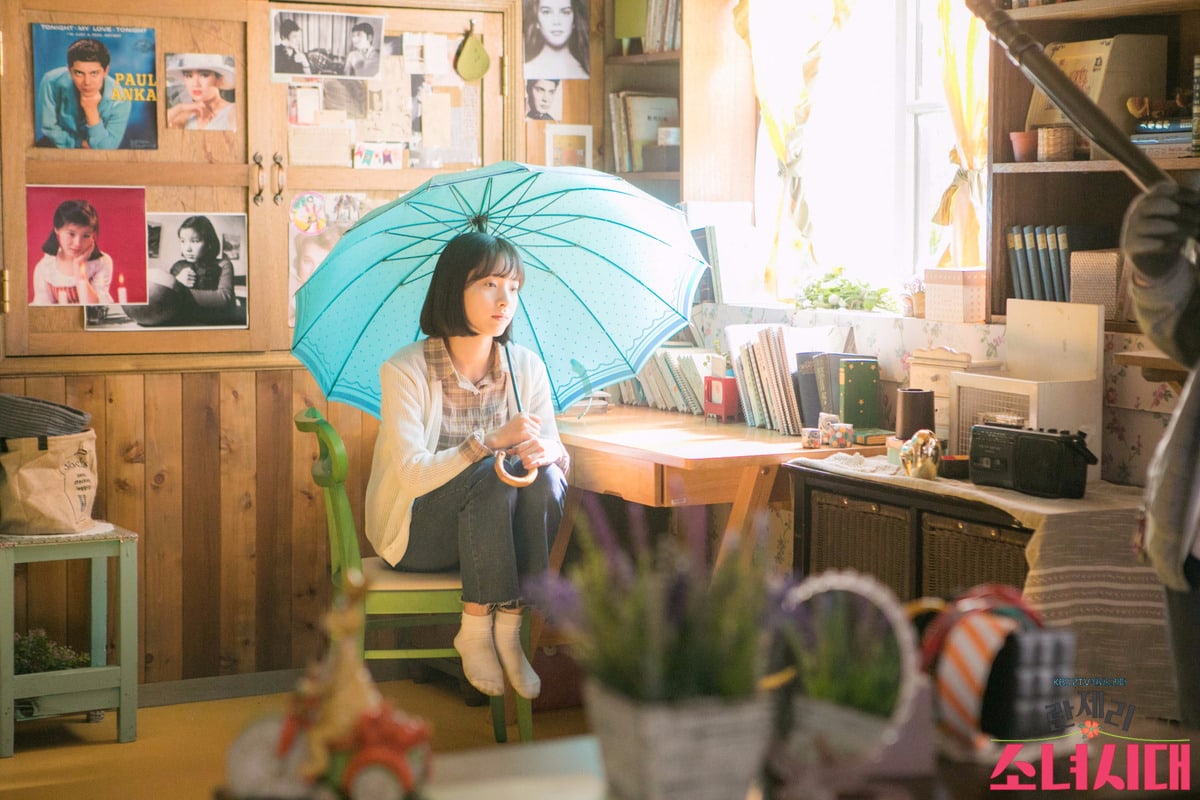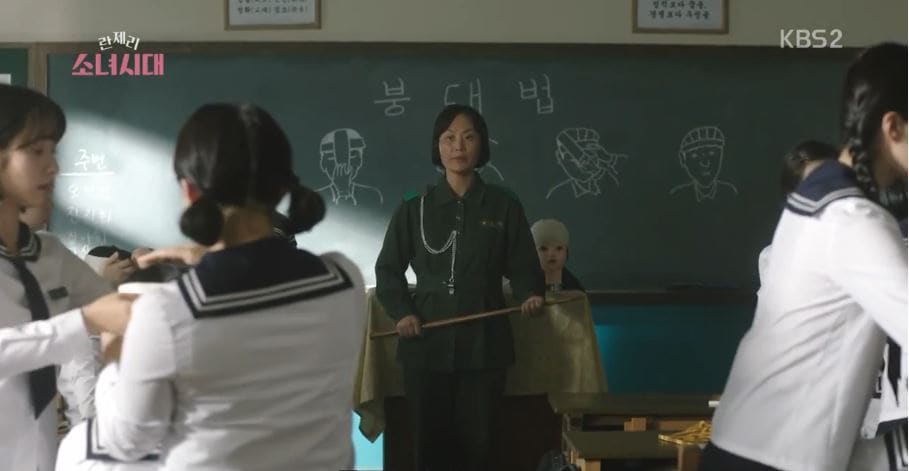
The Ultimate Throwback: A Primer On All Things From The '70s In "Girl's Generation 1979"
“Girl’s Generation 1979” is giving everyone nostalgic feels with its retro-inspirations, and if you’re a young millennial, some of the ’70s pop culture references that some of the characters are making may not be familiar. Of course, the bittersweet young love stories of the youth in the drama are more than enough to make you want to watch more, but it will be much more fun if you have some background knowledge about the setting and can spot some iconic items that might not be easily noticeable.
The story takes place in the late ’70s in South Korea (particularly in Daegu), a transitional time when the country was getting back on its feet after the Korean War. It’s a turbulent yet captivating era that adds to the conflicts and growth of the characters.
Traditional family structure
There was still a strong dichotomy between roles expected of males and females in the family. In one scene, we see the men eating on a different table from the women, and the father is held at a high esteem as the sole bread winner of the family. The son, on the other hand, is a favorite and is considered the pride and joy of the family. This is where Jung Hee (Bona) struggles every day, as she seeks genuine recognition from her father. Her father keeps nagging and calling her names, making her feel like an insignificant member of the family.

Working women in industries
Around the ’60s and ’70s, South Korea was a developing country, and it had only been roughly 15 years since the Korean War. Kongdan Oh writes about this in an article posted in Brookings: “The Korean economic miracle that was achieved under President Park Chung Hee’s leadership in the 1960s and 1970s is a story of dazzling national transformation from poverty to wealth.” During this time, women were only starting to get accepted into the workforce, as they had long been regarded as homemakers.
But since men were considered dominant at the time, the bosses of the industries where women worked were mostly men, and there was still a traditional point of view in most families that it was better to have a son than a daughter (who would only be married off to another family). This is probably why Lee Jung Hee’s father thinks she is inferior to her twin brother, and often tells her that it’s no use for her to go to school.

Political unrest
Hye Joo’s (Chae Seo Jin’s) father, a former professor from Seoul, was considered a communist, which ostracized them from society. He was believed to have supported student uprisings and to have helped hide the students from the authorities. There was a movement for democracy, and during President Park’s administration (which led an 18-year military regime), hundreds of people who were believed to be part of protests and rights groups were jailed.

“Get lost, communist!”
Girls in schools
The president’s “Five Year Economic Development Plan” enabled the country to grow its economy, technology, and education. Parents were sending their daughters to school, and it opened several opportunities for them.

Education system
One particular subject in school that stood out in the drama is the one where the students are taught about emergency preparedness and first aid, in case a war with the North breaks out.



The drama also portrays how differently school discipline was carried out back then. One of the school’s male teachers practiced punishment on the girls by making them kneel on their desks and pulling the back straps of their bras. In today’s society, this would definitely be considered sexual and physical harassment; during that time, however, the girls were afraid to speak because teachers were held as high authority figures.
Throwback fashion
American pop culture was becoming popular in South Korea: from fashion, music, and entertainment, to food.




Music
The soundtrack plays an important role in this drama, as it sets the mood and takes us back to the time period in which the story takes place. There were no mobile phones, no internet, and if you noticed in Jung Hee’s house, they don’t even have a TV! Their main mediums of entertainment were radios and movie theaters. The drama reflects the time period by playing songs by Barbara Streisand, The Carpenters, Paul Anka, ABBA, and Bee Gees, among others. It was an exciting time for music, as the songs were either revolutionary (breaking traditional genres) or extremely romantic.

Hollywood personalities and children’s animation
In the drama, Jung Hee makes references and compares her beauty to Brooke Shields and Olivia Hussey. Both were prominent actresses and poster girls in their time, and they are known for their ethereal beauty.


In this scene, you can see a photo of Bruce Lee on the bookshelf on the right.

You can see posters of famous Korean stars as well as Paul Anka and Brooke Shields

The drama also makes a reference to Japanese animation, as Young Choon’s little sister was singing the intro song of the animation “Candy Candy” in one particular scene. “Candy Candy” first appeared as a manga novel by Japanese writer Keiko Nagita under the pen name Kyoko Mizuki in April 1975. It’s a coming-of-age story of a positive, outgoing orphan who captured the hearts of many children.

Why the title “Lingerie Girls’ Generation”?
The title of this drama can be directly translated as “Lingerie Girls’ Generation.” This is mostly likely because Jung Hee’s family owns a factory that makes underwear, and a strappy undershirt is a symbol of a girl growing up, making it an appropriate title for a coming-of-age drama. Jung Hee and her friends consider it a “dream” to wear an undershirt with straps.


You catch all these iconic items and references in the first episode of “Girls’ Generation 1979” below!
DP_Kim is an English magazine and online writer and former stylist based in South Korea. Follow her Korean adventures at instagram.com/dianne_panda.





Comments